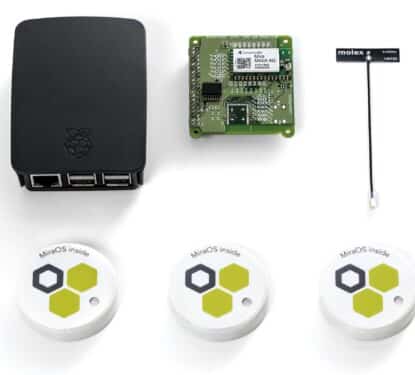As much as 98% of all security camera footage is never reviewed according to some industry insiders. Footage is only, generally, reviewed when an incident is reported and that specific timeframe is investigated for evidence. Beyond that, our vast network of “high-tech” connected video surveillance equipment primarily just serves as a deterrent.
“The truth is, most companies have installed camera systems for their deterrence and documentation qualities. It’s been said that industry-wide, 95% of the video recorded is never reviewed,” said Gloria Lubben, Executive Vice President of SecurAlarm. “I posed this statistic to a member of the loss prevention team for the world’s largest retailer and he said, “It’s more like 98% never gets looked at.””
Labor costs and the limited human mental capacity to maintain focus on largely “empty” footage provides obstacles, but artificial intelligence (AI) does not have such limitations and the technology seems to be on the verge of disrupting the video surveillance industry. Theoretically, AI can scan multiple streams of real-time or historical footage and, over time, learn to identify any visible actions that a security manager may be interested in. The availability of automated, intelligent forms of surveillance also has huge implications beyond security, such as people or asset tracking.
“Imagine trying to find things you like on the Internet without a search engine,” we said in a 2018 article. “Without a search engine, it would take an unfathomable amount of time and you would inevitably miss a huge number of things you would have liked to find. In fact, web pages are probably created faster than you could even check them, essentially making the task impossible. That is similar to the state of video surveillance, without recent developments in artificial intelligence (AI).”
Perhaps the age of surveillance will really start when surveillance technology is given the intelligence to identify and highlight footage of interest, accurately and in real-time. It appears that change is coming. Venture capitalists are now pouring billions of dollars into financing AI chip and analytic software companies, Last year a Memoori report identified 128 companies across the world that are now in some way helping to deliver AI video analytic solutions.
“There is still much to be done in perfecting the technology and getting it to market, but these ‘new tools’ have opened up the opportunity to bring AI products to the video analytics market potentially revolutionizing its performance and capability,” explains the report, The Global Market for Intelligent Video Analytics 2018 to 2023. “And if it can deliver, it will further drive demand for intelligent video surveillance, not just for new projects but open up a vast latent potential for retrofitting millions of existing camera installations.”
Just last week, California-based start-up Vintra announced $4.8 million in funding from Bonfire Ventures, Vertex Ventures, and London Venture Partners, among others. The firm has developed its FulcrumAI platform - a codec-agnostic, highly scalable, AI analytics system that works with all kinds of video, rather than just that from traditional security cameras. Vintra utilizes proprietary computer vision algorithms to integrate with leading video management service providers in order to analyze surveillance footage in real-time.
Follow to get the Latest News & Analysis about Smart Buildings in your Inbox!
“Every year, billions of dollars in time and resources are spent on security personnel to monitor livestreams, as well as post-event investigations by law enforcement and analysts,” said Vintra CEO Brent Boekestein, formally VP of sales and business development at Redwood Systems. “Vintra exists because we knew we could use computer vision and deep learning to build a new way forward for video analytics that took mobility and customization into account.”

Vintra’s FulcrumAI Investigator solution, for example, was adopted by law enforcement departments in its native California and in New York City. According to the company, the software enabled one detective to analyze over 743 hours of video footage in just four hours, which helped another team identify a suspect.
The accuracy of AI video analytics, in general, has been called into question. In the UK, London’s Metropolitan Police says its AI video analytics system produces as many as 49 false matches for every hit. While in Cardiff, the use of facial recognition technology at the June 2017 Champions League soccer final, was said to have a 92% false positive rate. Data about the South Wales Police's use of the technology at the event showed that 2,297 false positives occurred in the 2,470 alerts. Meaning, nine times out of 10 times, the system incorrectly flagged an innocent person as suspicious.
“[They aren’t] where they need to be to be making operational decisions off the facial recognition,” said Rick Smith, CEO of body-camera supplier, Axon. “This is one where we think you don’t want to be premature and end up either where you have technical failures with disastrous outcomes or… there’s some unintended use case where it ends up being unacceptable publicly in terms of long-term use of the technology.”
The world market for Video Surveillance products is expected to grow at a CAGR of 13.43% to 2023, according to our recent report The Physical Security Business 2018 to 2023. “The reason for this is the demand for AI Video Analytics that should gradually be taken up over the next 5 years having the potential to add a further $2.3Bn to the video surveillance market by 2023. AI Video Analytics will be the number one game changer over the next 10 years in the video surveillance business, influencing the growth of most products that make up this business,” the in-depth report explains.
If AI is to disrupt the video surveillance market through analytics and live up to this growth then it will need to overcome issues to increase accuracy. Today, our best answer to improving accuracy is AI itself, and most in the industry agree that it is only a matter of time before AI video analytics “learns” how to be a reliable and powerful surveillance tool for smart buildings and cities.



